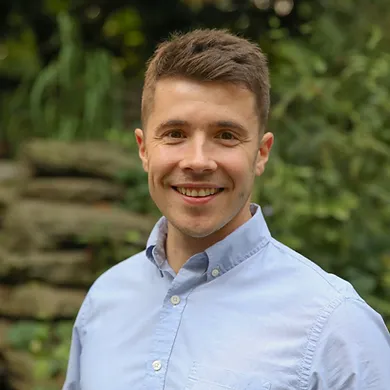About
Dan completed his PhD in Neuroscience at Northwestern University where he received training from Drs. Emily Rogalski, Changiz Geula, and M.-Marsel Mesulam. Dan is currently a research associate in Dr. David Irwin’s Digital Neuropathology Lab associated with the Frontotemporal Degeneration Center at the University of Pennsylvania (Penn). As a translational neuroscientist with a recently funded career development award, his research aims to identify the most vulnerable regions and cell types to tau or TDP-43 proteinopathies.
Moreover, his experiments investigate how these cellular changes may contribute to the behavioral and cognitive impairments characteristic of frontotemporal dementia (FTD) and related disorders. Dan develops new high-throughput postmortem approaches within a neuroanatomical framework to quantify changes to the arrangement and quantity of neurons and axons (cytoarchitecture and myeloarchitecture).
To find disease-specific and clinically relevant patterns of neurodegeneration, he plans to connect these microscopic changes to macroscopic networks, cognitive decline, and in vivo biomarkers in the FTD spectrum. When not behind a microscope, he loves hiking mountains, photographing nature, and teaching his dog new tricks.
What is your area of research as it relates to FTD?
My research as a postdoctoral fellow is focused on studying the effect of Alzheimer’s disease (AD) pathology or co-pathology (using biomarkers) in patients with corticobasal syndrome and progressive supranuclear palsy. I combine blood and cerebrospinal fluid biomarkers, neuroimaging and clinical data. I would like to understand how the clinical symptoms, atrophy patterns and functional connectivity networks are modified when patients are positive or negative for AD biomarkers. The results of my study will contribute to more accurate in-vivo clinical-pathological classifications and identify profiles of patients that may benefit from targeted therapy.
What inspired you to do FTD research?
I have always been interested in the study of brain function, pathophysiology, and clinical symptoms in order to better understand different neurodegenerative diseases. FTD is thrilling as it is an umbrella of different clinical variants and pathologies. This hinders FTD clinical diagnosis, but speaks of the complexity of the disease and its challenges. Moreover, patients with dementia deserve better treatments and a society that understands and supports them, and I believe that doing research can be the way to contribute my part to this.
What challenges have you faced in FTD research?
The heterogeneity in the patients’ samples and the complexity of the diagnosis are producing no reproducible results and failed clinical trials. We need to pursue better clinical-pathological definitions and keep the development of biomarkers that will allow us the early detection of the disease.
What hopes do you have for FTD research?
I think that the next generation treatments in FTD should take other neurodegenerative diseases as models. In AD, future clinical trials will use combined drugs for targeting multiple pathological proteins and gene therapies, and there are already studies of repurposing drugs. Based on that, we can expect more advances in the FTD field. In the meantime, I think that early detection is the light that should lead us in research.
